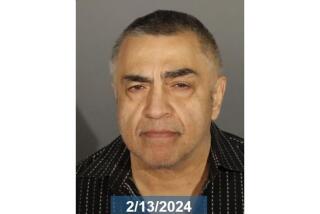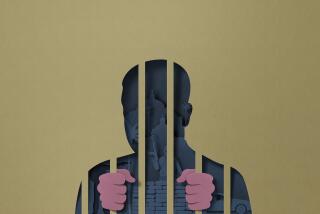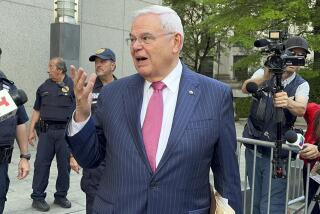Witness Reports Threat on Life by Marcos Confidante : Philippines: Real estate broker testifies he was warned not to reveal details of New York transaction. Testimony takes defense by surprise.
- Share via
NEW YORK — A real estate broker testified Wednesday that his life was threatened if he revealed details of a secret 1981 transaction involving then-Philippine first lady Imelda Marcos and her late husband, Ferdinand.
Testifying in the federal fraud and racketeering trial of Mrs. Marcos, Thomas J. Bryan said he was told by a Marcos confidante that “if anything further became public that I should fear for myself and my family.”
He said the threat came in a telephone call from Gliceria Tantoco, a close friend of Mrs. Marcos and a business associate who federal prosecutors say fronted for the Marcoses in purchasing property, art and antiques here.
Tantoco, who jumped bail in Rome while awaiting extradition to face trial with Mrs. Marcos, is a fugitive who sources said may be hiding in Morocco.
Bryan, the prosecution’s first witness in a trial expected to last well into the summer, clearly caught defense attorneys by surprise with his startling disclosure.
He said the call from Tantoco came after a New York newspaper carried sketchy details of an attempt by Mrs. Marcos to acquire a Park Avenue mansion and its furnishings, a collection of art and antiques known as “the Samuels collection.”
“She (Tantoco) was just very distraught that this information came out,” Bryan testified.
Gerry Spence, representing Mrs. Marcos, sought to minimize the threat by showing that Bryan continued to have both business and social contact with Mrs. Marcos after the Tantoco phone call. But under further questioning Bryan said he had been “extremely” upset and frightened by the call.
According to testimony Wednesday, Mrs. Marcos tried to buy the Park Avenue mansion of Leslie Samuels in 1981, using Tantoco as the buyer of record to protect the secrecy of her purchase.
However, because the residence is in a cooperatively owned building, the ploy was foiled when the board of directors refused Tantoco’s application for membership. Unable to buy the home, Mrs. Marcos bought only its furnishings for about $5.9 million.
Prosecutors say that money came through the New York branch of the Philippine National Bank which Mrs. Marcos used as her “own personal piggy bank.” She is accused of conspiring with her late husband, the former president of the Philippines, to plunder their nation’s treasury.
From the outset, the first day of testimony was not a good day for the Marcos defense team.
Earlier, an attorney for co-defendant Adnan Khashoggi told jurors that his client was a dupe of the Marcoses and that he “lost a lot of money” trying to help them.
In his opening statements, attorney James Linn characterized Khashoggi--once regarded as one of the world’s richest men--as a foolish businessman who even fell for a Marcos story that he had a “ship of gold.”
Marcos claimed the gold would finance his return to the Philippines from Hawaiian exile and he offered Khashoggi a chance to earn 10% of the cargo if he could find a “safe port” for the ship, Linn said.
“(Marcos) told Mr. Khashoggi that he had a ship on the sea, and this guy fell for it. . . . He made trip after trip” to Hawaii to meet with Marcos in hopes of finding a suitable port--”preferably an Arab port that might be friendly to Mr. Marcos,” Linn said.
Khashoggi is accused of helping the Marcoses try to conceal their ownership of four Manhattan buildings and art works from the Samuels collection by filing false and forged documents claiming that he owned them.
At the time Khashoggi became involved--in late March, 1986--a federal court judge had just issued an injunction banning any sale or transfer of the buildings because of claims filed by the new Philippine government of Corazon Aquino that the once-secret Marcos holdings were purchased with funds stolen from the nation’s treasury.
Prosecutors say that the Marcoses, with Khashoggi’s help, tried to circumvent that court order by making it appear that the property and art belonged to the Saudi businessman, not the exiled former leaders of the Philippines.
Among the documents already introduced as evidence are backdated declarations that include the signatures of Khashoggi and Tantoco.
Linn conceded that some of the government’s allegations are true, that some false documents were filed, but he argued that Khashoggi’s signature was forged on some pages and that the false documents he did sign were mistakes.
More to Read
Sign up for Essential California
The most important California stories and recommendations in your inbox every morning.
You may occasionally receive promotional content from the Los Angeles Times.













